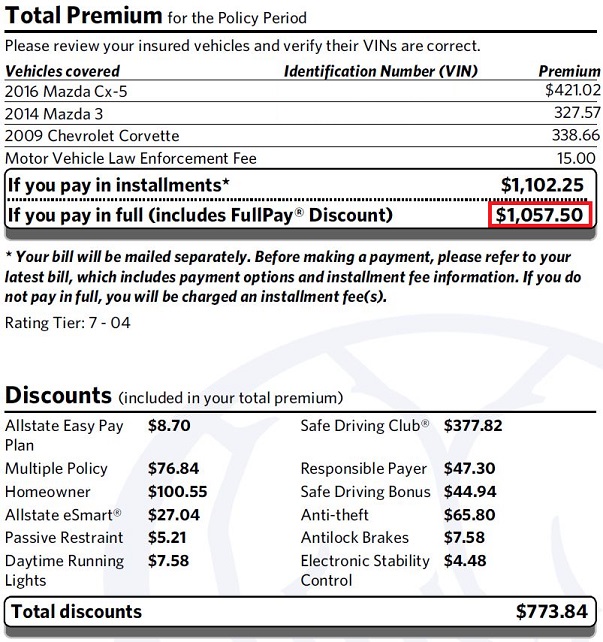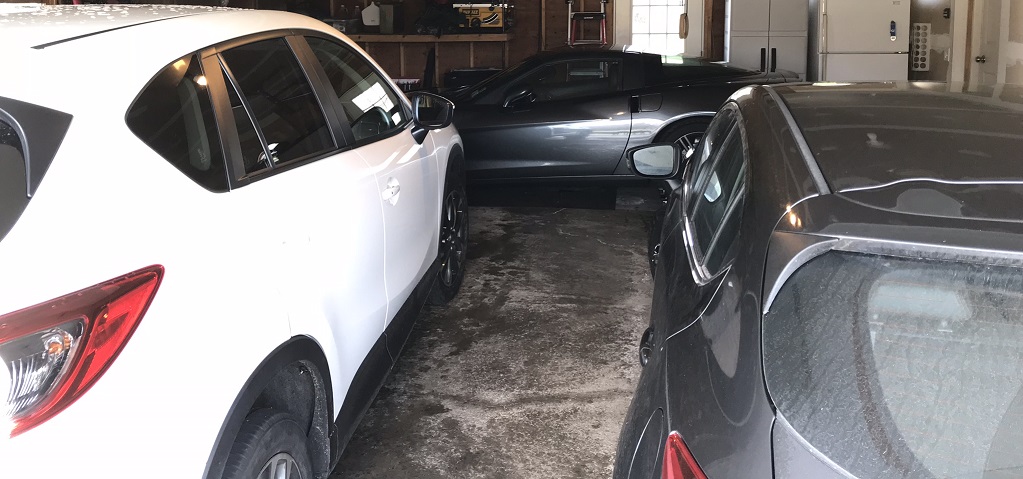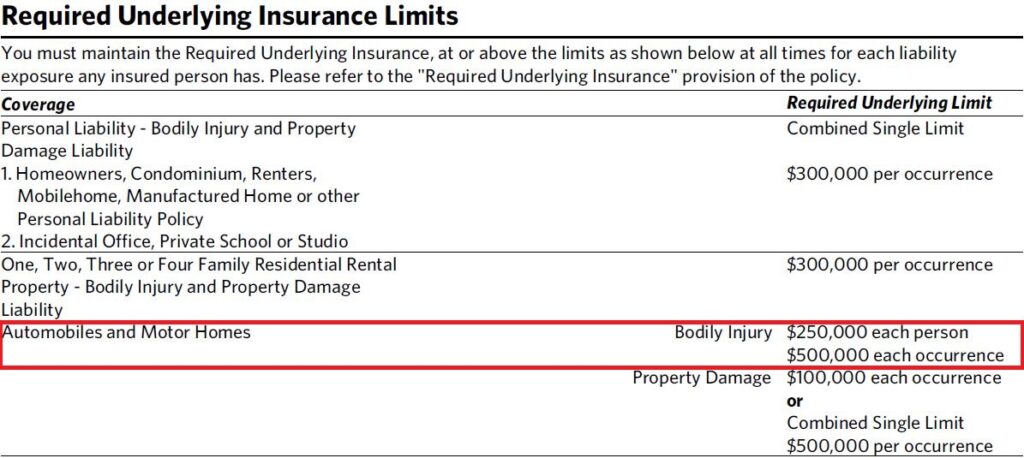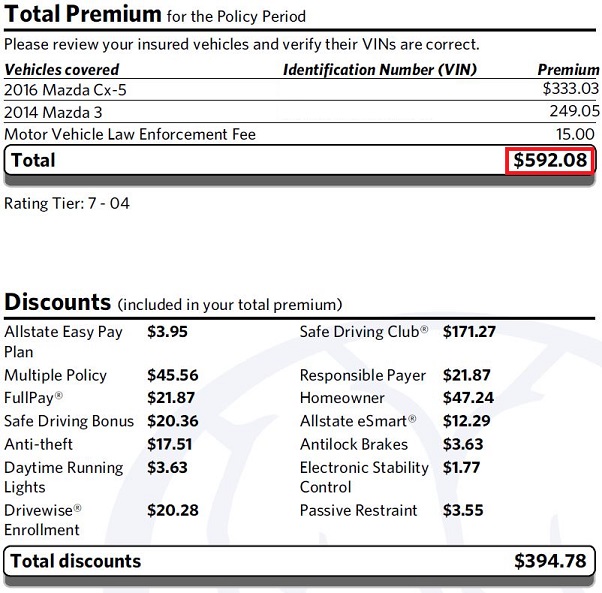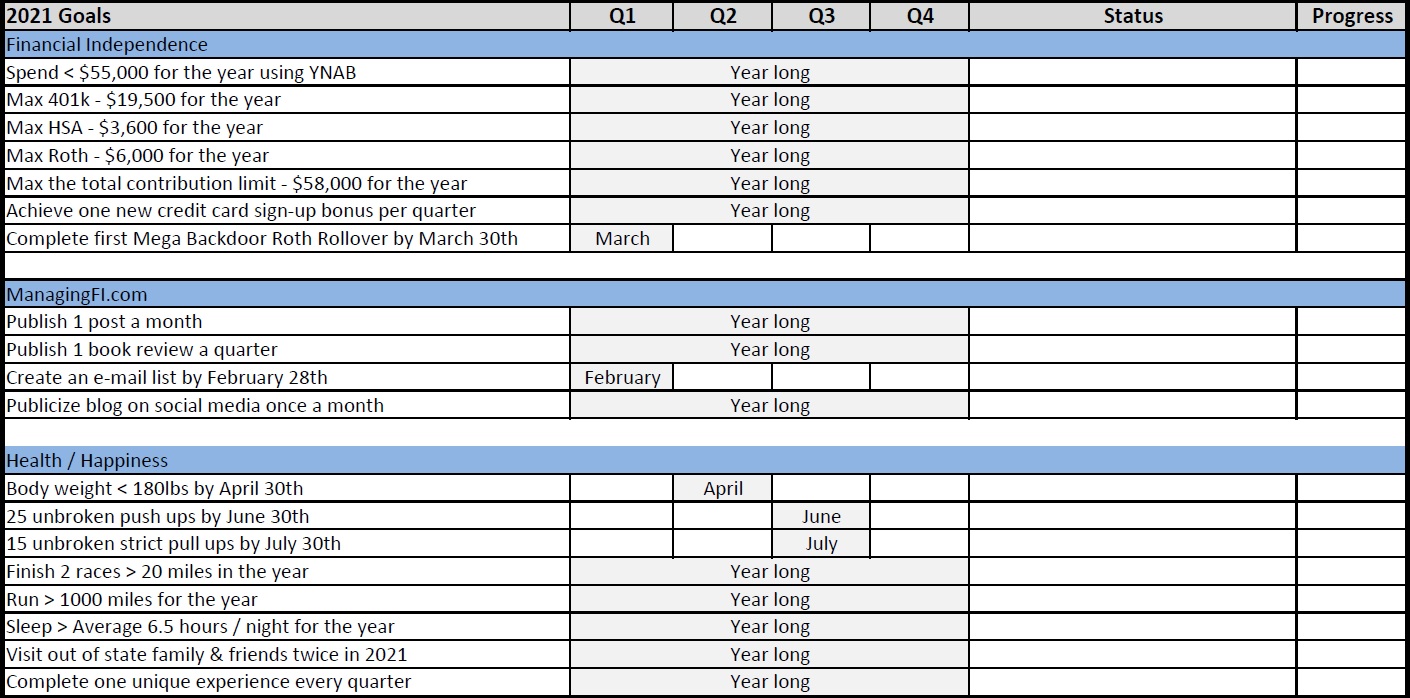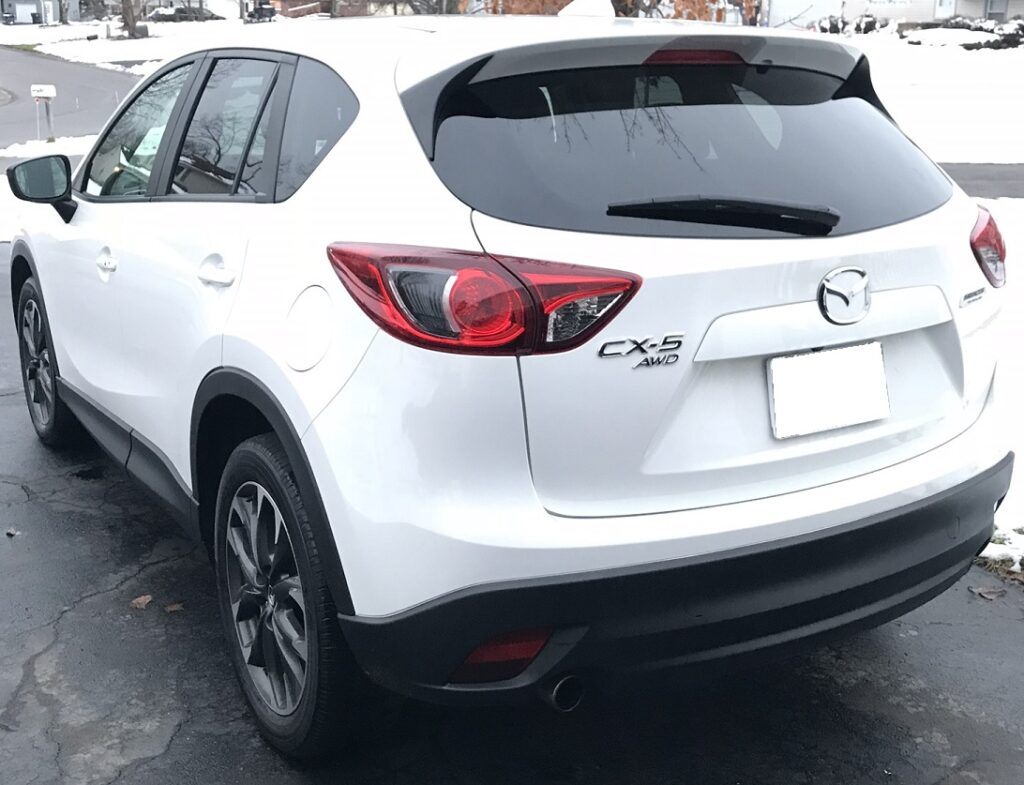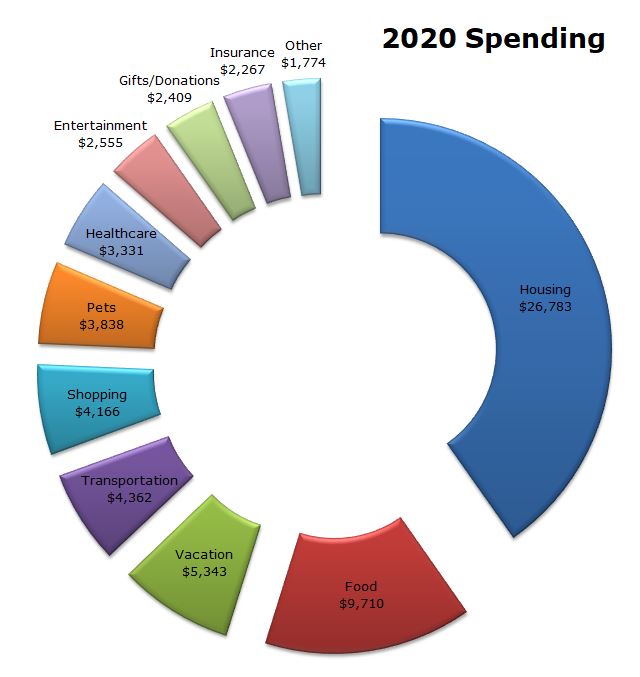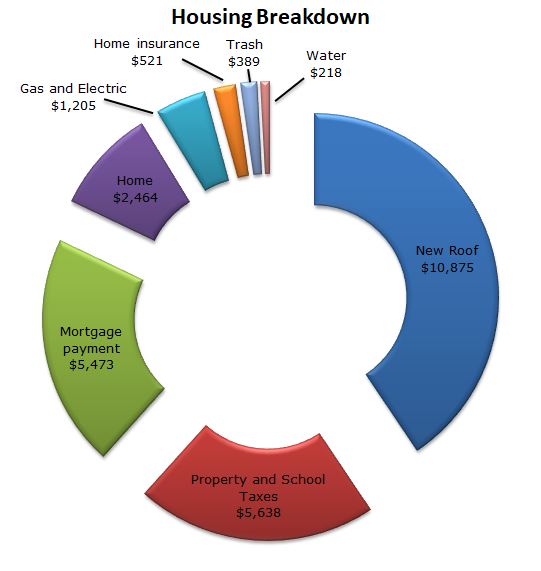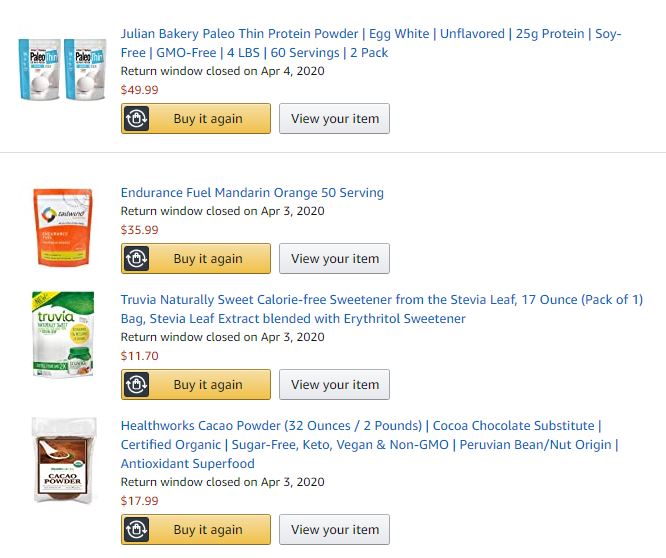
BLUF: Our time on this earth is limited and not in our control when we have to work. Financial independence is a way to give us back control over our time and giving ultimate freedom.
Independent (adjective): not subject to another’s authority or jurisdiction; autonomous; free.
Dictionary.com
Americans love the idea of freedom. We love the idea that we have control over our lives having the power to choose what we want to do with our lives and how we spend our time. But most of us aren’t really free. We’re slaves to one necessity in life: money.
We need food, shelter and clothing as basic necessities to live and most of us exchange money to get them. Then there are the “wants” on top of the needs. Elaborate housing, fancy cars, exotic vacations, latest tech gadgets and luxury fashion goods. As the spending goes up, the debts and income needs go up. You’re trapped in that job to pay for that lifestyle of wants.

And what are we ultimately offering up to get that money via our job? Our time. Time is one thing in life that we have a finite amount of left but we don’t know the amount. We could have decades, years, months or just days left and none of us know exactly. If you have days left and you’re spending it reading this blog then I’m truly honored. And confused. Or both.
Until you no longer need to work for money, you are missing a special type of independence that traditionally has been thought of for the 60+ crowd and the really rich. Until that point you can’t go to the park whenever you choose to. You can’t take a vacation without asking the permission of someone else. You are living on someone else’s schedule.
Financial Independence: What is it?
Financial Independence is a point where you’ve built a money machine large enough to work in place of you and pay for your life. Your money and investments are working for you, 24/7, making money so you can do what you want with your time. Sounds much cooler than a money tree, doesn’t it?

Financial Independence with a Portfolio
How much does this money machine need to make? Well, now that you’re tracking your spending you know what life costs you to live right now. A retirement planning study was done at Trinity University, which has since become known as “The Trinity Study,” showed that a 75% stock, 25% bond portfolio had a 98% chance of not running out of money after 30 years if you withdraw 4% a year. This also accounts for inflation adjusted withdrawals.
This has developed into what people refer to as the “4% rule” of thumb. Make a portfolio that is large enough so that you can cover your expenses by withdrawing 4% a year and you have an extremely high chance of success over 30 years. That’s because the stock market returns roughly 8% a year on average over the history of it. 8% returns – 4% withdrawals – 2-3% inflation > 0. On average, your stock investments grow faster than you can spend them accounting for inflation. That’s why this works.
How do you figure this out for yourself? Divide what you spend in a year by 4% or multiply it by 25 (1/.04). If you spend $60,000 a year: $60,000 / 0.04 = $1,500,000. $60,000 * 25 = $1,500,000. This portfolio size based on the 4% rule is what people refer to as your “FI number”.
What’s magical about this is that you have the power to change this amount DRASTICALLY by your spending. Say you make some smart choices and are able to live on $50,000 a year? You’ve just reduced how much you need by $250,000 to $1,250,000! That’s taking years off your working life. Want to do some geo-arbitrage and retire in cheaper Mexico or southeast Asia? Maybe then you can live on $40,000 / year and retire with $1,000,000
Financial Independence with a Business
The FI concept can be achieved just the same with a business as it can with a portfolio. Business can mean a variety of things beyond opening up another Subway in the neighborhood. An online store is a business. A YouTube channel can be a business. Real estate can be a business. You don’t need to invent a product or build the next Google to reach FI. You just need income streams that exceed your expenses.
Real Estate is a particularly popular business vehicle to reach FI in the community. Say your personal expenses are $60,000/year. If you can make a rental provide you with $500 a month in income after all expenses, that’s $6,000 a year. Build up 10 rentals over the years that cash flow the same? You’re now bringing in $60,000 a year covering all your expenses and you’ve reached FI. The only work required is managing those properties. If that $500 profit already includes paying for a management company then you don’t even need to do that.
FI versus FIRE
The more popular term floating around the media is actually FIRE – Financial Independence Retire Early. It’s a lot more exciting for people to talk about FIRE because on the surface the idea of quitting your job before 65 or 60 sounds appealing.
On this blog you won’t hear me talk about FIRE much because I never really plan to stop working. Change my career along the way? Quite possibly. Stop traditional office work? Certainly. But I’ll always seek out work that adds meaning to my life. It’s part of the reason I’ve started spending so many hours writing this blog.

More to the Financial Independence story
Don’t get me wrong, the 4% rule of thumb is a simplification of the total story and I encourage you to learn more. When you get closer to your “number” you need to make sure to take into account taxes, changes in spending and healthcare costs just to name a few things. It’s a target to work towards though. Something that’s easy to wrap your arms around.
Don’t feel bad if you’ve never heard of financial independence or that the being able to retire early is within reach for the middle class. Nobody talks about the idea that your retirement age and how much you need is tied to your spending. Here’s a retirement calculator from AARP and it’s typical of the common approach that you’ll find. Notice that the question is “At what age do you plan on stop working?” Whaaaaaaat? They’re asking you for the answer to the problem that you want to solve: When can I retire? People need a calculator to tell them what age they can stop working given their saving and spending. I think it would be pretty eye opening to many if they realized they could stop working much earlier if they spent less money. A famous FI blogger, Mr. Money Mustache, has a beautiful article on this concept called “The shockingly simple math behind early retirement.”
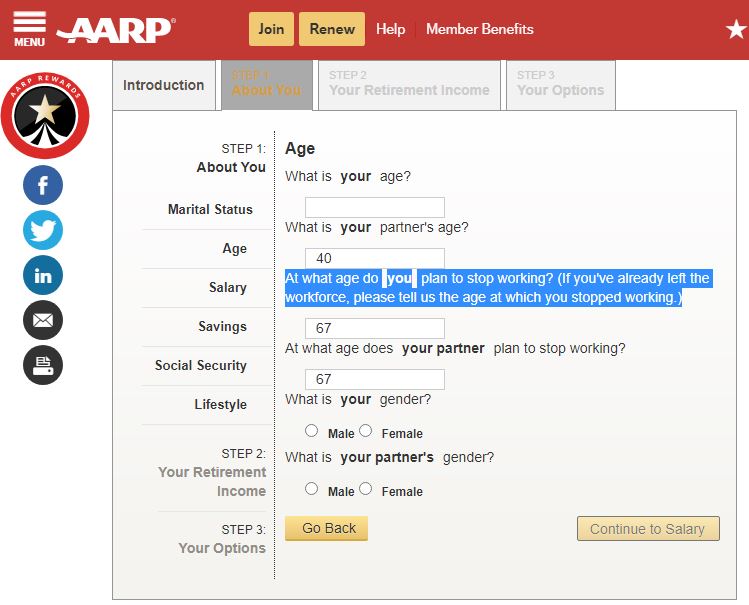
Here’s another retirement calculator example from a large investment company. In this case they assume that you saved spent 85% of your income and saved 15% to get to retirement. In retirement you stop saving and the spending stays the same.
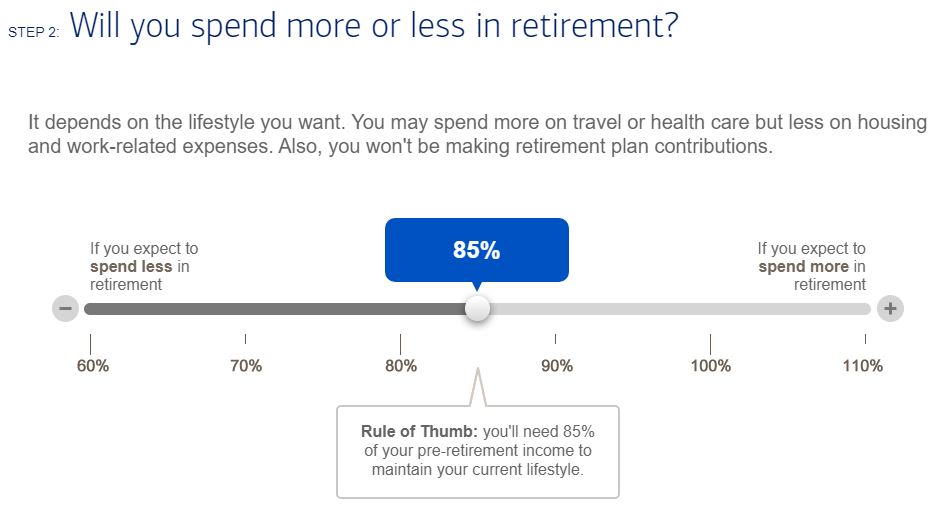
Financial Independence: Why pursue it?
I started this post talking about FI really being about time. Time is a funny thing in that the older you get, the more valuable it becomes to us. It’s the one commodity that you can’t really buy more of so as you age you value the time you have much more so than you did when you were young and weren’t worried about death. It’s not a linear relationship, it’s an exponential one.
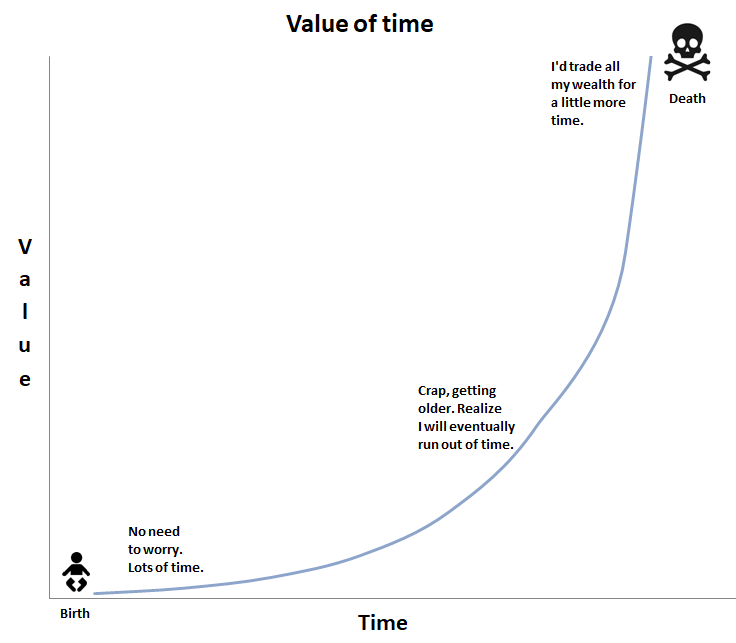
Since we trade our time for money, the inverse value relationship is true with money. The older we get, the less we value the time for money trade. That’s one reason Warren Buffet once said in his 80’s that he’d trade all his wealth to be 25 years old again.
The traditional path is to work until you reach age 67 and then hope your mind and body haven’t degraded too much to enjoy the years that you have left in your life. In the US, that’s until 78 on average.
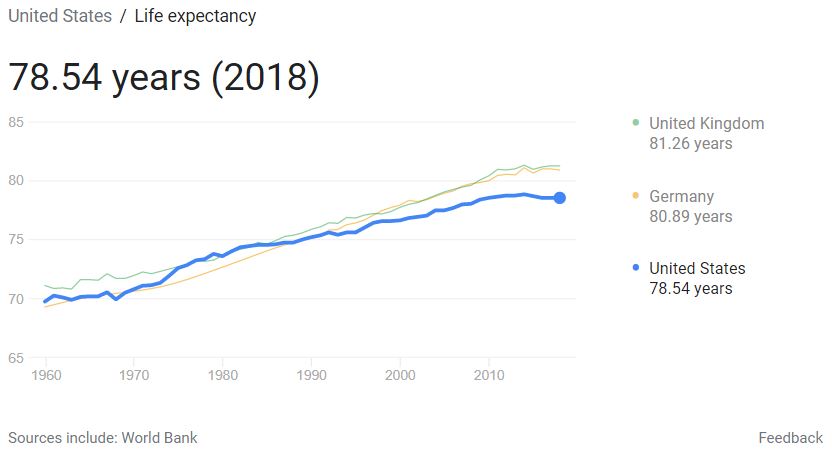
If you assume the last year of your life is probably spent with degrading health issues then that leaves you with 10 good years on average. 10 years of freedom to do whatever you want…if you’re lucky to make it that long. My mom died at 63 of cancer so she didn’t even make average retirement age. That was one catalyst for thinking about how I could live a different life. That’s my “why.” Life is short and you never know when it could abruptly get even shorter.
Yes, I love my job, now. Doesn’t mean I want to work it until 67, or 65, or 60. There’s power in the options that FI money brings and I want to be in the drivers seat to choose my own path.
Discoveries along the journey
The road to accumulating 25x your expenses is long. Even with a 50% savings rate it takes roughly 17 years to be able to retire. But there have been noticeable benefits as my financial security has increased and I’ve learned more about the ways to make things fit the life that I want:
- 3 month emergency fund – Having 3 months of living expenses means zero stress about any financial speedbumps that life throws at us. Roof needed to be replaced last year, no big deal. Furnace goes this year? Okay.
- 1 year of expenses – Having a year living expenses to me is the definition of what people call “Fuck You” money. If your employer put you in a situation that you weren’t happy with you can say no. They can fire you or you can walk away and you aren’t worried. You want me to work weekends? No thanks. You need me to work 60 hours next week? Sorry, not interested.
- Awareness of my budget and spending has put me in control of my finances. I know where the money is going and where I could cut if I had to.
- Learning and life hacks – I’ve always been a problem solver but now I feel like I have a whole different toolbox of life hacks to draw from to make things easier. Tax optimization, geographic arbitrage, travel rewards, minimalism, time efficiency and many more. Every problem in life I now approach in a completely different way which has been a lot of fun. I question the conventional ways of doing things constantly. I’m excited to share many of these tools as this blog gets larger.

Action Steps:
- Understand what your expenses are.
- Take meaningful steps to reduce expenses that don’t add value to your life. Make goals related to this and track them.
- Using this post, calculate your FI number.
- Play around with your yearly expenses. How does that change your FI number?
- Calculate given your current saving and investing plan, what age you will hit FI. More help coming on this step in the future.
Are you pursuing financial independence? If so, what is your “why” for doing it?


